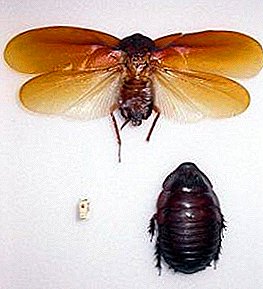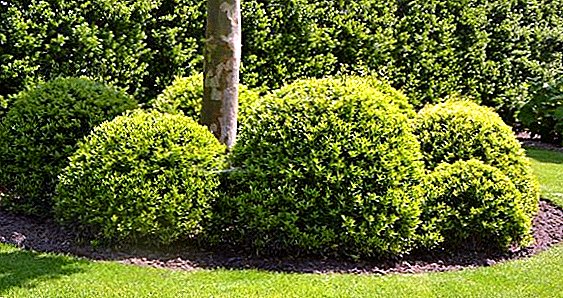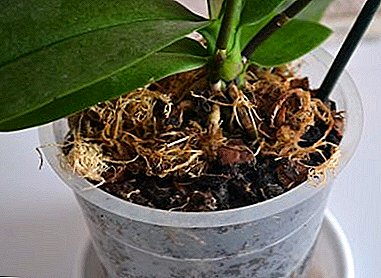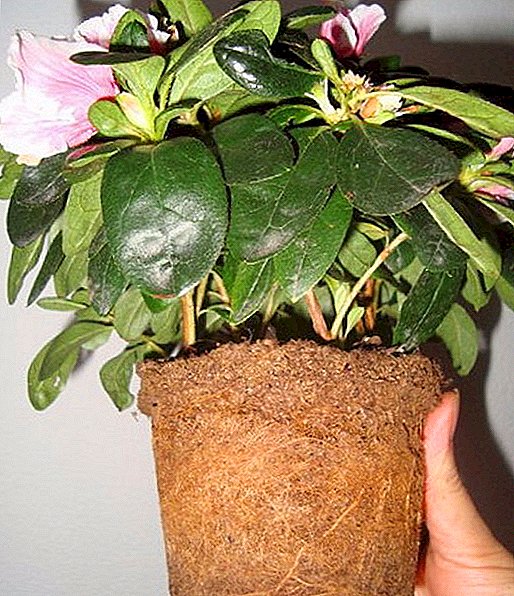 Azalea (lat. Azalea) - a very beautiful plant of the genus Rhododendron of the Heather family. Flower lovers admire the contrast of its abundant, lush flowering with bright green leaves. However, azalea can also upset its owners, being exposed to a large number of diseases and pest invasion. The article discusses the main causes of azalea diseases and their treatment.
Azalea (lat. Azalea) - a very beautiful plant of the genus Rhododendron of the Heather family. Flower lovers admire the contrast of its abundant, lush flowering with bright green leaves. However, azalea can also upset its owners, being exposed to a large number of diseases and pest invasion. The article discusses the main causes of azalea diseases and their treatment.
Did you know?Beautifully flowering species and varieties of azaleas come from China, Japan, Southeast Asia, Europe and North America. In eastern countries, azalea is a symbol of joy, peace and freedom. Azalea came to culture more than 300 years ago. At the beginning of the XIX century, Captain Welbenck brought from India a fine specimen, which became the ancestor of a huge number of diverse hybrids and varieties bred by botanists as a result of lengthy breeding work.
Signs of late blight and its treatment
If you notice that azalea leaves begin to change color, curl, dry and fall off, and also her kidneys die, these are signs of late blight. The reason may be increased humidity and high temperature in the environment of its habitat.  Treating the plant, treating Bordeaux liquid or "Fitoverm", you also need to increase the permeability of the soil.
Treating the plant, treating Bordeaux liquid or "Fitoverm", you also need to increase the permeability of the soil.
What to do if azaleas have white bloom, how to cure leaf chlorosis
Sometimes you can notice the white bloom formed on the back side of the azalea leaves, after which they wither and fall. The cause is fomoz, which occurs when improper watering of the plant and violation of the temperature in the room. What to do?
Countermeasures are spraying azaleas with a 0.1% solution of Topsin-M and a 0.2% solution of Fundazol. Repeated processing is recommended to be made three more times every 10 days.
Another problem with azaleas is the yellowing of the leaves. The reason is chlorosis. There is a disease with a lack of nutrients in the soil. Similar indications suggest an oversupply of calcium salts in a flower pot.
The treatment of the disease consists of the introduction of a complex plant nutrition. Used fertilizer for azaleas and gardenias. You can perform foliar azalea dressing.
Important! It is not recommended to place the azalea in places where direct sunlight falls.
How to treat phylocystitis azaleas
 Flower growers often wonder why azaleas turn black leaves. Planting ash-gray leaves with a brown border or dark brown spots on a plant, from which sporangia balls fall, means that azalea is infected with phyllostosis.
Flower growers often wonder why azaleas turn black leaves. Planting ash-gray leaves with a brown border or dark brown spots on a plant, from which sporangia balls fall, means that azalea is infected with phyllostosis.
To help the flower, apply 0.2% solution of "Fundazol" and 0.15% solution of the drug "Topsin-M" alternately, and destroy the damaged leaves;
Did you know? Acquaintance with azalea can sometimes be dangerous. Its smell can cause severe headache, and azalea leaves and shoots trapped in drinking water can cause poisoning. This plant has another unusual property: if you cut a sprig of azaleas and bring a lit match to it, the branch will flare up, as if drenched in gasoline.
How to cure azalea from Fusarium
When the azalea leaves turn yellow, the stem and roots wither, and a pink bloom is visible on the root collar, these are the first signs of Fusarium.
To cure a flower from this disease, it must be isolated from other plants and treated with a 0.2% solution of "Fundazol".
Measures to combat Alternaria
The appearance on the leaves and stalks of the plant of a spot-red color of different shapes and sizes indicates that the azalea has been infected with alternaria. A preventive measure is the treatment Bordeaux fluid.
On azalea leaves, dark brown spots, treatment of goleosporia
 If dark brown and / or gray spots appeared on the leaves of azaleas, as well as blackening traces, feel free to make a diagnosis —gleosporia. The cause of this disease may be the defeat of black thrips, rhododendron tick, Fusarium disease.
If dark brown and / or gray spots appeared on the leaves of azaleas, as well as blackening traces, feel free to make a diagnosis —gleosporia. The cause of this disease may be the defeat of black thrips, rhododendron tick, Fusarium disease.
In the case of black thrips, the plant is reanimated with the emulsion "Karbofos", if a rhododendron tick appeared on azaleas - the solution of "Fundazole" will help. With fusarium, the drug "Diazinon" will help.
Important! Azalea negatively reacts to dry air, therefore keeping the plant close to heating devices is strictly prohibited.
Causes of azalea septoria disease and their elimination
Reddish-yellow spots with black dots on the leaves of the plant are the reason why the azalea dries after flowering. The plant has septoria, which can be caused by late fertilizing with nitrogen fertilizers, abundant watering, and not cutting in time.
For the treatment of fungicidal drugs used.
Important! Tap water is not suitable for watering azaleas. She needs to be given time to settle, so that lime can settle to the bottom.
Azalea necrosis
With a significant decrease in air temperature near azaleas, the main axis of the leaf dies off, and from above it acquires a brownish tint, which signals the appearance of necrosis.
 There are varieties of azaleas, which after flowering dry and fall leaves. It occurs mainly in the winter. In this case we are talking about the period of rest at the plant. The flower is transferred to a cool, dark place, watering is reduced, do not contribute to top dressing. The resting period ends with the appearance of new leaves. If the azalea has not bloomed, but leaves are showered on it, then care of the plant should be reconsidered. Therefore, we recommend choosing frost-resistant flower varieties.
There are varieties of azaleas, which after flowering dry and fall leaves. It occurs mainly in the winter. In this case we are talking about the period of rest at the plant. The flower is transferred to a cool, dark place, watering is reduced, do not contribute to top dressing. The resting period ends with the appearance of new leaves. If the azalea has not bloomed, but leaves are showered on it, then care of the plant should be reconsidered. Therefore, we recommend choosing frost-resistant flower varieties.
Azalea: disease prevention
The plant, like a person, requires constant increased attention. Therefore, it is recommended for azalea owners to carry out simple prophylaxis in the early stages of azalea growth by treating with copper oxychloride (the most benign dose) - it kills up to 90% of fungi with a solution of "Fundazole" (the period of immunity from the appearance of new fungi up to 25 days) and apply organic fertilizers that improve protective plant functions.
The following are brief guidelines for basic azalea care:
- Shine. It is necessary to provide the plant with a light or semi-shady place, protected from direct sunlight.
- Proper watering and ionization of air. It is necessary to use boiled or melt water when watering, to prevent stagnation of water in the pot sap to avoid over-humidification.
Important! Watering and spraying the plant must be regularly in the morning.
- Temperature. Azalea feels comfortable at a temperature of 12-15 ° C.
- The soil. One of the important requirements for care is planting in heather land (or a mixture of coniferous and peaty land with the addition of river sand).
- Fertilizer. It is necessary to feed azaleas in the summer period with ammonium sulfate, in winter - with superphosphate.
- The flowering period. Do not forget to pinch and trim the plant stems in a timely manner. Start doing it in May.












